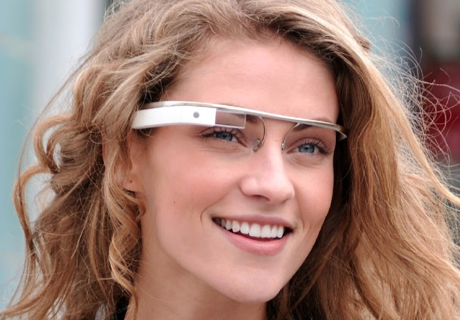Google Products Reflect a Renewed Spirit of Superior Design
September 27, 2013
Since Larry Page became CEO of Google, the company has been more focused on the elements of design and cohesiveness. Google has been pursuing aesthetic appeal in a way that may allow it to rival Apple, and although the process is gradual, Google products are beginning to show that the company has raised its standards. The change is obvious when examining Google’s mobile apps, its Chromebook Pixel laptop and Google Glass.
 “Larry has raised the bar for everything we do in design,” says Sundar Pichai, senior vice president for Android, Chrome, and apps. “Everything now has design as a fore-element. Larry has helped bring a focus on design as a narrative across Google’s products.”
“Larry has raised the bar for everything we do in design,” says Sundar Pichai, senior vice president for Android, Chrome, and apps. “Everything now has design as a fore-element. Larry has helped bring a focus on design as a narrative across Google’s products.”
If successful, Google could possibly become Apple’s aesthetic competition.
“We saw the first glimpse of this potential last winter when the search company capitalized on the failure of Apple’s map app with an iOS map app of its own,” reports Fast Company. “No one was surprised by the accuracy or comprehensiveness of Google’s app — those qualities are what we’d long expected of Google and why the world had demanded the product.”
“What came as a shock, though, was Google Maps’ instant visual appeal. The old Google Maps app — which Apple built into earlier versions of the iPhone — had a staid, workmanlike interface. Google’s new app — on Apple’s platform — wasn’t just better than its old incarnation. It was cleaner, less ostentatious, and more immediately approachable than Apple’s own Maps app.”
Page has vowed to not micromanage the design process. “Larry’s not telling us, ‘This is what Google Maps should be,'” says Jonah Jones, the lead designer for Maps. “Larry just says, ‘Make this great.’ And when you bring him something that’s not great, he’ll say, ‘Make it better.'”
However, Page still expects work to be done in a timely fashion.
“Google’s new design plan was born in a locked conference room at the Googleplex, just across the hall from Page’s office,” notes the article. “In the spring of 2011, many of the firm’s top designers got together for the first time since Google’s earliest days to hammer out a new look for the company’s iconic products. Wiley and Chris Wiggins, a designer who heads a new Google-wide design unification group known as UXA (User Experience Alliance), named the effort Project Kennedy, because for designers, making Google a preeminent design firm was a moonshot worthy of JFK. For almost a month, designers spent every day squeezed around a giant conference table, poring over design printouts pasted on foam boards, moving between small groups working on a single product and larger groups working across products.”
Although Google is working to make design and cohesiveness priorities, it is difficult to objectively measure beauty. However, Google has stated that beauty is both simplicity and invisibility.
“The Chrome browser, for instance, takes its name from the frame — the ‘chrome,’ in user-interface jargon — surrounding a desktop OS window. The design team’s goal was to reduce this chrome to the point of invisibility so that the stuff on a Web page became much more prominent than the buttons and icons on the browser window surrounding it. Google Now aims to do a similar thing. By intelligently anticipating your needs and floating information to you when you need it, Now renders the old search box wonderfully irrelevant in many daily scenarios,” explains Fast Company.

No Comments Yet
You can be the first to comment!
Leave a comment
You must be logged in to post a comment.